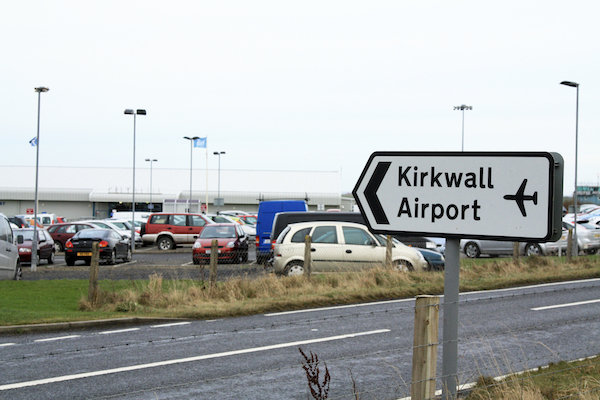HIAL to proceed with air traffic scheme despite forecast job losses

Highlands and Islands Airports Ltd. (HIAL) has confirmed that it will be proceeding with its controversial Air Traffic Management Strategy (ATMS), despite warnings of widespread job losses at airports across the region, including Kirkwall.
An impact assessment for the ATMS, published today, Friday, has forecast “very significant negative impacts” on Orkney’s economy, if current plans go ahead.
But HIAL’s managing director, Inglis Lyon, has said that the company has “always known” that there would be “impacts” resulting from such a scheme. He has endeavoured to continue with the ATMS, with the aim of delivering “viable solutions that will maintain lifeline services and essential connectivity for generations to come”.
HIAL’s strategy is set introduce remote integrated air traffic control services for the five airports — Inverness, Dundee, Stornoway, Kirkwall and Sumburgh. This will be delivered via a Combined Surveillance Centre (CSC) located in Inverness.
Additionally, Benbecula and Wick John O’Groats airports will change the way air traffic management is delivered by extending their current AFIS (Aerodrome Flight Information Service) operations.
HIAL’s view is that the impact assessment report, penned by Reference Economic Consultants, “makes clear that the status quo is not sustainable”.
The report compares the impact of the ATMS programme with what HIAL had considered as an alternative option — a local surveillance solution based at existing airports. While the ATMS option would is forecast to result in as many as 16 FTE jobs lost in Orkney, the local surveillance option would involve an increase in staff at the airport.
According to HIAL, this alternative solution was explored but eventually discounted — not just because it was the “most costly” option, but because it did not offer the same level of staff resilience, operational flexibility or recruitment and retention benefits that the company believes the ATMS offers.
As part of the development of ATMS, an online survey of HIAL’s air traffic staff was undertaken as well as a full consultation programme with relevant communities, local authorities, community councils and national politicians. The trade union Prospect was consulted as well as air operators.
Responding to the publication of the impact assessment report today, HIAL chairwoman Lorna Jack said: “We welcome the report and commend the author on a thorough and challenging examination of the issues.
“The commissioning of the report demonstrates our commitment to listen and do everything we possibly can to mitigate any impacts. We want to work with colleagues and communities to find practical solutions.
“We appreciate that a programme of this magnitude and complexity will bring significant change for people in our communities, including our highly-valued air traffic control colleagues.
“However, standing still is not an option — we must modernise. ATMS is the only option that provides the necessary levels of resilience required to ensure long-term sustainable air traffic service provision for the communities we serve.”
HIAL has said that it has identified and put forward numerous initiatives aimed at making the transition as manageable as possible. The company’s board has “accepted the potential impacts on local employment and economies” and agreed with the further recommendations to explore where HIAL’s operations can create more economic activity for island communities.
HIAL intends to commission an independent study to identify where that can be done, specifically, for Lewis, Orkney, Shetland and Uist.
HIAL managing director Inglis Lyon, said: “We have always known there would be impacts by undertaking such a significant and complex change management programme.
“To date, there have been no alternative proposals that provide a solution that fully addresses all of the challenges HIAL currently faces.”
HIAL has written to all relevant local authorities to request meetings and has offered to work together with stakeholders to identify where it can contribute further to local economies.
Mr Lyon said: “We hope that everyone with a vested interest in the long-term future of air traffic services in the Highlands and Islands will work us to deliver viable solutions that will maintain lifeline services and essential connectivity for generations to come.”

